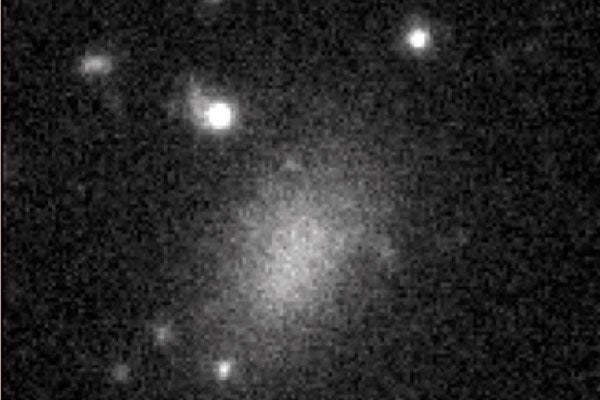
Fluffy galaxies: now that we know they're real, can we figure out what happened to all the stars?
Published: May 20, 2015
It took the combined efforts of one of the world's smallest professional telescopes with the world's largest telescope and an international team of researchers. But now we know: fluffy galaxies exist.
Next question: why?
The University of Toronto's Professor Roberto Abraham is a member of the team that recently confirmed the distance to faint galaxies previously discovered with the Dragonfly Telescope Array, one of the smallest professional telescopes in the world. New observations made with a spectrograph on one of the largest telescopes in the world – the 10-metre Keck 1 telescope – confirmed they are at a distance of 300 million light-years and are associated with the Coma Cluster.
The objects could well have been relatively nearby, common dwarf galaxies; but the new distance measurement confirms that they are much farther and therefore much larger. This means that they are members of an intriguing new class of objects popularly known as fluffy galaxies but officially called Ultra Diffuse Galaxies. Comparable in size to the Milky Way Galaxy, these galaxies contain just one per cent of the stars.
The discovery raises many questions about how such objects could have formed.
“Are they ‘failed galaxies’ that started off well and then ran out of gas?” asked Abraham. “Were they once normal galaxies that got knocked around so much inside the Coma cluster that they puffed up? Or are they bits of galaxies that were pulled off and then got lost in space?”
The findings were recently published in the Astrophysical Journal Letters.
“If the Milky Way is a sea of stars, then these newly-discovered galaxies are like wisps of clouds,” said Pieter van Dokkum of Yale University, who led the team of researchers. “We are beginning to form some ideas about how they were born and it’s remarkable they have survived at all.
“They are found in a dense, violent region of space filled with dark matter and galaxies whizzing around, so we think they must be cloaked in their own invisible dark matter ‘shields’ that are protecting them from this intergalactic assault.”
 At right: a fluffy or ultra-diffuse galaxy, Dragonfly 17, is shown next to other types of galaxies, to scale. The Andromeda galaxy is a giant spiral like our own Milky Way, and a dwarf elliptical galaxy, NGC 205, is also shown. Ultra-diffuse galaxies have the same number of stars as dwarf ellipticals, but spread out over a much larger region.
At right: a fluffy or ultra-diffuse galaxy, Dragonfly 17, is shown next to other types of galaxies, to scale. The Andromeda galaxy is a giant spiral like our own Milky Way, and a dwarf elliptical galaxy, NGC 205, is also shown. Ultra-diffuse galaxies have the same number of stars as dwarf ellipticals, but spread out over a much larger region.
(Image courtesy B. Schoening, V. Harvey/REU program/NOAO/AURA/NSF, P. Van dokkum/Hubble Space Telescope)
Read more about the research and the W.M. Keck Observatory.)



